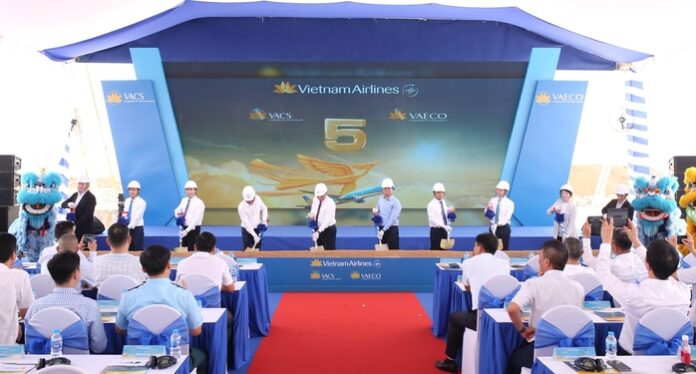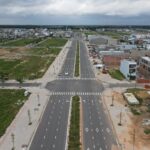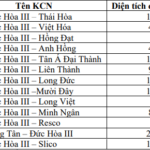On June 15th, Vietnam Airlines and its subsidiaries inaugurated two aviation service infrastructure projects at Long Thanh International Airport, with a total investment of nearly VND 1,800 billion. These items fall under the aviation service area in Component Project 4 of the Long Thanh Airport project.
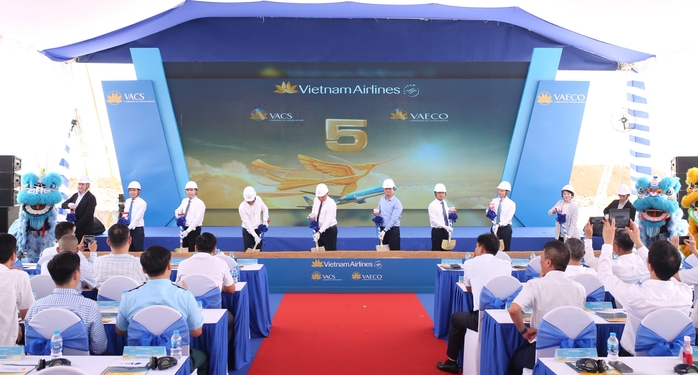
Delegates performing the groundbreaking ceremony
The two projects include: The first aviation catering project, implemented by Vietnam Airlines Catering Company Limited (VACS), and the first aircraft maintenance project, carried out by Vietnam Airlines Engineering Company Limited (VAECO). Both are subsidiaries of Vietnam Airlines.
The aviation catering project is built on a plot of land E-09, spanning over 30,600 square meters, with a total investment of approximately VND 687 billion. In the initial phase, the factory can supply 20,000 meals per day, with the capacity to double to 40,000 meals depending on the airport’s development progress. The facility is designed to meet food hygiene and safety standards and the technical requirements of the aviation industry, including a separate HALAL meal preparation area covering more than 1,600 square meters.
In addition to serving Vietnam Airlines, VACS also aims to cater to domestic and international airlines operating at Long Thanh Airport, which is envisioned to become a prominent international transit hub in Asia.
The aircraft maintenance project is located on plot E-01, covering an area of over 45,500 square meters, with a total investment of over VND 1,100 billion in the first phase. The project includes a hangar capable of accommodating two wide-body and two narrow-body aircraft simultaneously, along with equipment workshops, material warehouses, and auxiliary technical areas. The expected maintenance capacity is at least 250,000 man-hours per year, serving approximately 120-150 aircraft maintenance turns.
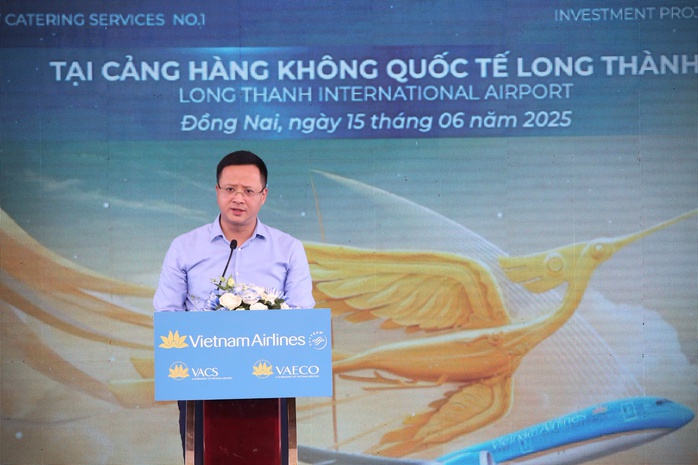
Director of the Vietnam Aviation Authority, Mr. Vuong Viet Dung, speaks at the event
The project is expected to be completed by the time Long Thanh Airport commences commercial operations. At that point, it will be one of the most modern aviation technical centers in Vietnam, providing line and base maintenance services for aircraft such as the Airbus A320, A321, A350, and Boeing 787.
Previously, another Vietnam Airlines subsidiary, Ground Services Company (VIAGS), commenced a project for the repair and maintenance of ground support equipment in Long Thanh.
These projects are being initiated as Long Thanh Airport prepares for its commercial operation phase. They represent vital technical service infrastructure components that will facilitate the airport’s future operations.
“The East’s Real Estate Renaissance: Unveiling the ‘Huge’ Infrastructure Revolution”
“The upcoming completion of key infrastructure projects, including the Tan Van Interchange, Ring Road 3, Long Thanh Airport, and the Bien Hoa-Vung Tau Expressway by the end of 2025, is creating a significant pull effect, reigniting real estate investment in areas directly connected to these transport links.”


























